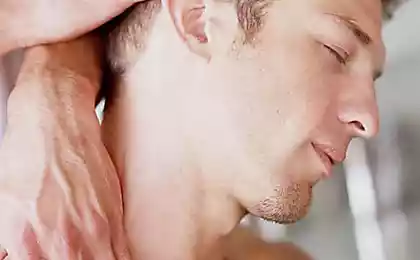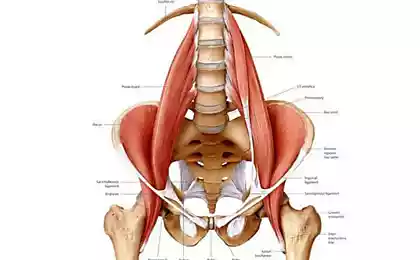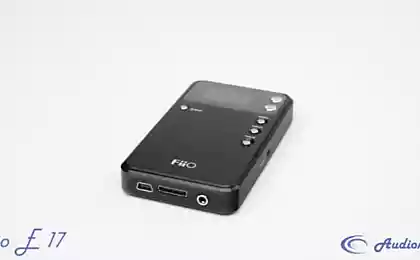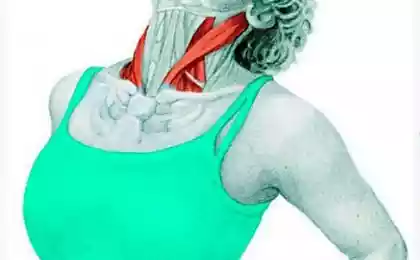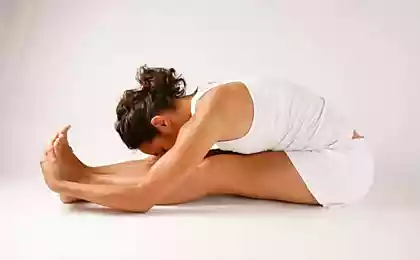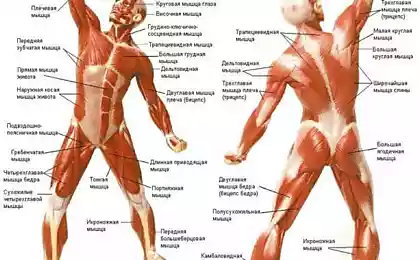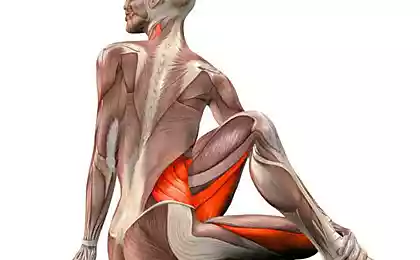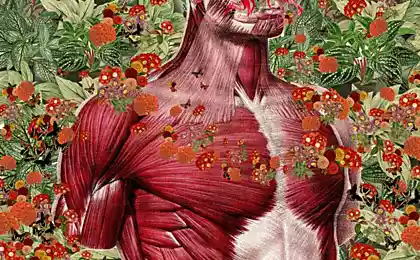599
The diastase of direct muscles of a stomach: Who is to blame and what to do
Today's article is one of the most popular women's topics — the diastase of direct muscles of the abdomen after childbirth. So men, if You came to us at the light, then you can safely return to his business, for such bjaka You not threatened because of the lack of the ability to be in an interesting position.
You will learn all about the diastasis – what it is, why occurs very often in pregnant women, what are the myths and what are the gestures, or rather exercise, will help improve the situation with him.

The diastase of direct muscles of a stomach. What, for what and why?
Lately, I often come in the mail letters from young mothers, in which they share their problems, in particular — about the diastase of direct muscles of stomach, and complain that the Internet is not true (does not contradict) clear information regarding this phenomenon. Due to the fact that the number of calls exceeded an inability to respond to everyone, I decided to devote this issue to the full note, which is in front of You. Well, first we start her...
The birth of a child is one of the main missions of a woman on this planet, and perhaps You would not be reading these lines, if such a mission would not have been performed by my favorite female. However, the birth of a child (especially the second) is not lost on the mothers and often carries a whole heap of extra Goodies, in particular such:
The diastasis of the abdominal muscles: the theoretical side of the issue
The diastasis – the separation/divergence of direct muscles of a stomach. The result of that division right and left halves of the rectus abdominis muscle (Rectus Abdominis) push relative to the average abdominal fascia, the white line. In art embodiment, the separation of the muscles as follows.

A diastasis is most often (in two of three cases) occurs in women who have given birth second and subsequent child.
Extension and thinning of the tissue midline occurs in response to the pressure of the uterus against the abdominal wall, and also the hormones contribute to the “softening” of connective tissue. The middle line of more than 2-2,5 fingers wide (about 2 cm) is considered problematic.
A diastasis is most likely to occur just after pregnancy when the abdominal wall is soft and thin fabric the midline of the abdomen no longer provide adequate support to the torso and internal organs. Ladies should understand that a small extension of the middle line happens in all pregnancies and is normal. In some women after childbirth, the discrepancy does not exceed 1.5-2 fingers, but, for the most part, the values go beyond a 2.5.
Often diastasis disrupts slender figure, flat tummy and prenatal is a serious problem, causing aesthetic discomfort in women. In particular, surveys show that ladies are shy to undress and expose the top even before his betrothed. So the problem definitely needs solving. In addition to the aesthetic inferiority, the diastase of direct muscles of the abdomen reduces the integrity and functional strength of the abdominal wall and can also cause lower back pain and pelvic instability.
A major role in generating diastase during childbirth, genetics plays, in particular, miniature and small girls are at increased risk. For more dense women and those who were not strangers to physical activity and fitness, pregnancy can occur even without diastasis.
In the modern information flow, You can face many conflicting opinions and advice on how to repair the abdominal wall and midline after childbirth. Most of these recommendations may worsen abdominal separation, and in fact You will get even more diastasis.
And therefore you need to know about...
Myths about diastasis of the abdominal muscles
So, there are the following myths in relation to the divergence of straight muscles, and such
How to determine if I have a diastasis?
This simple test will help determine whether You have a divergence of the abdominal muscles or no need to be nervous prematurely. In order to identify a diastasis, do the following:

Don't panic if felt a "big hole" in the stomach in the first few postpartum weeks. The connective tissue of the median line after delivery is quite soft, but with time and the execution of appropriate exercise it will slowly but surely regain its former density and elasticity, reducing the size of the holes.
So,You have done the test and suspect the diastasis. Now let's define what it degree, and this will help us following classification.

Why pregnant women can get diastasis?
In fact, the divergence of the abdominal muscles is not only a lot of pregnant women, it can be:
Due to the increase of the fetus, linea Alba (connective tissue) is stretched to the sides. Your organs will now “push” this connective tissue and You would look like with a bulging tummy and by weakness of the abdominal muscles, to feel and sense their difference.
So, some theory we have laid down and realized that the diastasis is the internal protrusion of the abdomen under the muscles. Now let's move on to practical measures to improve the current "interesting" position.
Exercising with a diastasis of the rectus abdominis muscles. What are they?
Let's start with what movements/exercises should be strictly avoided in order not to aggravate the situation. These include:

In General, we can draw the following conclusion — with diastasis should avoid “direct” pressing exercises you need to focus on specific isometric movements. In particular, the following exercises can be performed, with the divergence of the abdominal muscles in order to improve the situation.
Exercise # 1. Lying pelvic lifts (bridge).
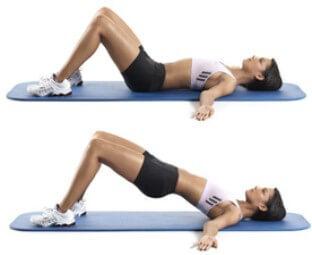
Lie on the floor on your back, bend feet in knees. Start to tear the pelvis, lifting the hips up. Hold at the top, squeeze your buttocks and straining press. Perform 3 sets of 10 repetitions.
Exercise # 2. Squat at the wall with a Pilates ball between your legs.
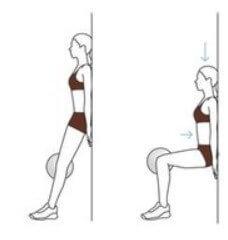
Lean back against the wall and squat to 90 degree angle, by placing a small ball yourself the foot. Hold the bottom position for 25-30 seconds and then straighten your legs, standing upright.
Exercise # 3. Lift legs up from a lying position.
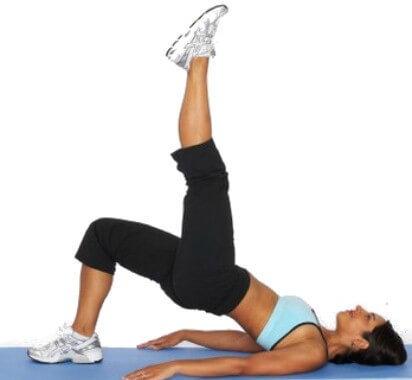
Lie on your back, bend your knees, and the feet put on the floor. Lift your left leg straight up, lifting the body from the surface. Lower your leg, returning it to its original position. Repeat the same for the right leg, perform 10 repetitions of each.
Exercise # 4. Slides feet.
Lie on your back and put your hands behind your head, stretch your legs. Slightly raising your legs straight, begin to bring them to the body, making steps in the air. Run Perform 3 sets of 20 repetitions.
Exercise # 5. Crunchy with a towel.
Wrap your torso with a towel and lie on the floor. Cross the ends on the waist and prejudices criss-cross hands. Slightly raising the head, neck and the tops of the arms, pull the ends of the towel, bringing together the chest with the pelvis. Perform 3 sets of 10 repetitions.
On average, regular exercise at least 3 times a week, the first visible results can be noticed after 1.5-2 months of training.
Actually, it all exercises if diastasis of the rectus abdominis muscles, as you can see, simple, but extremely effective.
However, exercise is not a panacea, and the synergistic effect (2+2=5) they will give, working in combination with a customized diet and aerobic activity. In particular, it should be remembered that when burning fat is the total change (decrease) of circles, including in the abdomen, therefore, the eviction of excess weight will help to reduce the pressure on the abdominal rectus muscles, and therefore the process of “healing” diastasis will go faster.
Thus it turns out that an effective plan to combat the discrepancy of the abdominal muscles as follows:
1. adjustment/power setting;
2. the inclusion of cardiovascular activity into your day;
3. performing specialized exercises.
So, with a plan of action figured out. Now let's answer the question: when can I start working to improve the situation of diastasis.
As for the start time of the work, it all depends on degree of “neglect” of the source material. Ie typically leggie phase of diastasis (1) resolve themselves over time — the fabric itself is delayed, without much fuss on Your part. On average, with proper diet and avoidance of bad habits, the time limit is 1.5-3 months.
Iodine and baking soda always have on hand!
Point to improve vision
All further stages (2 and 3) require action on Your part, and the time can range from 5 months to 1 year. So, if You are the owner of diastasis of 2-3 degrees, tune in to continuous operation, which can start after 2-4 weeks after birth.published
Author: Dmitry Protasov
Source: ferrum-body.ru/diastaz-pryamyih-myishts-zhivota.html
You will learn all about the diastasis – what it is, why occurs very often in pregnant women, what are the myths and what are the gestures, or rather exercise, will help improve the situation with him.

The diastase of direct muscles of a stomach. What, for what and why?
Lately, I often come in the mail letters from young mothers, in which they share their problems, in particular — about the diastase of direct muscles of stomach, and complain that the Internet is not true (does not contradict) clear information regarding this phenomenon. Due to the fact that the number of calls exceeded an inability to respond to everyone, I decided to devote this issue to the full note, which is in front of You. Well, first we start her...
The birth of a child is one of the main missions of a woman on this planet, and perhaps You would not be reading these lines, if such a mission would not have been performed by my favorite female. However, the birth of a child (especially the second) is not lost on the mothers and often carries a whole heap of extra Goodies, in particular such:
- weight gain;
- the appearance of the breeches – lugs/sides;
- cellulite;
- increase/spreading of the breast;
- voploshenie buttocks;
- the diastasis of the abdominal muscles;
- other.
The diastasis of the abdominal muscles: the theoretical side of the issue
The diastasis – the separation/divergence of direct muscles of a stomach. The result of that division right and left halves of the rectus abdominis muscle (Rectus Abdominis) push relative to the average abdominal fascia, the white line. In art embodiment, the separation of the muscles as follows.

A diastasis is most often (in two of three cases) occurs in women who have given birth second and subsequent child.
Extension and thinning of the tissue midline occurs in response to the pressure of the uterus against the abdominal wall, and also the hormones contribute to the “softening” of connective tissue. The middle line of more than 2-2,5 fingers wide (about 2 cm) is considered problematic.
A diastasis is most likely to occur just after pregnancy when the abdominal wall is soft and thin fabric the midline of the abdomen no longer provide adequate support to the torso and internal organs. Ladies should understand that a small extension of the middle line happens in all pregnancies and is normal. In some women after childbirth, the discrepancy does not exceed 1.5-2 fingers, but, for the most part, the values go beyond a 2.5.
Often diastasis disrupts slender figure, flat tummy and prenatal is a serious problem, causing aesthetic discomfort in women. In particular, surveys show that ladies are shy to undress and expose the top even before his betrothed. So the problem definitely needs solving. In addition to the aesthetic inferiority, the diastase of direct muscles of the abdomen reduces the integrity and functional strength of the abdominal wall and can also cause lower back pain and pelvic instability.
A major role in generating diastase during childbirth, genetics plays, in particular, miniature and small girls are at increased risk. For more dense women and those who were not strangers to physical activity and fitness, pregnancy can occur even without diastasis.
In the modern information flow, You can face many conflicting opinions and advice on how to repair the abdominal wall and midline after childbirth. Most of these recommendations may worsen abdominal separation, and in fact You will get even more diastasis.
And therefore you need to know about...
Myths about diastasis of the abdominal muscles
So, there are the following myths in relation to the divergence of straight muscles, and such
- causes irreversible damage to the abdomen;
- requires only surgical intervention;
- causes of constant bloating.to.a. “mummy-tummy”;
- causes pain;
- abdominal muscles after childbirth will never recover and will always be weak;
- all women should wait at least 8-10 weeks after childbirth before you start any exercise or postnatal recovery.
How to determine if I have a diastasis?
This simple test will help determine whether You have a divergence of the abdominal muscles or no need to be nervous prematurely. In order to identify a diastasis, do the following:
- lie on your back, bend your knees, the bottoms of the feet put on the floor;
- place one hand behind your head and another hand on your stomach, touching your fingertips across your midline, parallel with your waist at the navel;
- relax your abdominal wall and lightly press the fingertips of your abdominal cavity;
- slightly twist/tear off Your upper floor with krana, making sure that Your ribcage moves closer to the pelvis. Once the muscles begin to move from lock, how many fingers fit of them and how deep the fingers go inside;
- also record how many fingers fit napravleniya muscles slightly above and below the navel (3-5 cm in both directions).

Don't panic if felt a "big hole" in the stomach in the first few postpartum weeks. The connective tissue of the median line after delivery is quite soft, but with time and the execution of appropriate exercise it will slowly but surely regain its former density and elasticity, reducing the size of the holes.
So,You have done the test and suspect the diastasis. Now let's define what it degree, and this will help us following classification.
- Type 1 – small expansion of white lines in the umbilical region, the most harmless, i.e., practically does not affect the shape of the abdomen. Formed after the first pregnancy;
- Type 2 divergence in the lower divisions with the relaxation of the lateral muscles. Is reflected in the form of the abdomen, making it slightly bulging bottom;
- 3 type divergence of the abdominal muscles at the seams, both upper and lower divisions. Accompanied by the presence of umbilical hernias and unaesthetic appearance of the abdomen.

Why pregnant women can get diastasis?
In fact, the divergence of the abdominal muscles is not only a lot of pregnant women, it can be:
- the result of incorrect exercise technique;
- the result of the execution of certain exercises and sports;
- a consequence of excessive weight gain.
Due to the increase of the fetus, linea Alba (connective tissue) is stretched to the sides. Your organs will now “push” this connective tissue and You would look like with a bulging tummy and by weakness of the abdominal muscles, to feel and sense their difference.
So, some theory we have laid down and realized that the diastasis is the internal protrusion of the abdomen under the muscles. Now let's move on to practical measures to improve the current "interesting" position.
Exercising with a diastasis of the rectus abdominis muscles. What are they?
Let's start with what movements/exercises should be strictly avoided in order not to aggravate the situation. These include:
- exercises involving laying on your back on a fitball;
- yoga poses involving stretching of the abdominal muscles (dog, cow) and belly breathing (vacuum);
- the exercises involving flexion of the upper spine/separation of it from the floor against gravity. For example: abdominal curl lying, cross crunchy, Bicycle, roll-UPS, twisting at the block with the rope, push-UPS, plank;
- lifting/carrying heavy objects (children including);
- most four-legged exercises.

In General, we can draw the following conclusion — with diastasis should avoid “direct” pressing exercises you need to focus on specific isometric movements. In particular, the following exercises can be performed, with the divergence of the abdominal muscles in order to improve the situation.
Exercise # 1. Lying pelvic lifts (bridge).

Lie on the floor on your back, bend feet in knees. Start to tear the pelvis, lifting the hips up. Hold at the top, squeeze your buttocks and straining press. Perform 3 sets of 10 repetitions.
Exercise # 2. Squat at the wall with a Pilates ball between your legs.

Lean back against the wall and squat to 90 degree angle, by placing a small ball yourself the foot. Hold the bottom position for 25-30 seconds and then straighten your legs, standing upright.
Exercise # 3. Lift legs up from a lying position.

Lie on your back, bend your knees, and the feet put on the floor. Lift your left leg straight up, lifting the body from the surface. Lower your leg, returning it to its original position. Repeat the same for the right leg, perform 10 repetitions of each.
Exercise # 4. Slides feet.
Lie on your back and put your hands behind your head, stretch your legs. Slightly raising your legs straight, begin to bring them to the body, making steps in the air. Run Perform 3 sets of 20 repetitions.
Exercise # 5. Crunchy with a towel.
Wrap your torso with a towel and lie on the floor. Cross the ends on the waist and prejudices criss-cross hands. Slightly raising the head, neck and the tops of the arms, pull the ends of the towel, bringing together the chest with the pelvis. Perform 3 sets of 10 repetitions.
On average, regular exercise at least 3 times a week, the first visible results can be noticed after 1.5-2 months of training.
Actually, it all exercises if diastasis of the rectus abdominis muscles, as you can see, simple, but extremely effective.
However, exercise is not a panacea, and the synergistic effect (2+2=5) they will give, working in combination with a customized diet and aerobic activity. In particular, it should be remembered that when burning fat is the total change (decrease) of circles, including in the abdomen, therefore, the eviction of excess weight will help to reduce the pressure on the abdominal rectus muscles, and therefore the process of “healing” diastasis will go faster.
Thus it turns out that an effective plan to combat the discrepancy of the abdominal muscles as follows:
1. adjustment/power setting;
2. the inclusion of cardiovascular activity into your day;
3. performing specialized exercises.
So, with a plan of action figured out. Now let's answer the question: when can I start working to improve the situation of diastasis.
As for the start time of the work, it all depends on degree of “neglect” of the source material. Ie typically leggie phase of diastasis (1) resolve themselves over time — the fabric itself is delayed, without much fuss on Your part. On average, with proper diet and avoidance of bad habits, the time limit is 1.5-3 months.
Iodine and baking soda always have on hand!
Point to improve vision
All further stages (2 and 3) require action on Your part, and the time can range from 5 months to 1 year. So, if You are the owner of diastasis of 2-3 degrees, tune in to continuous operation, which can start after 2-4 weeks after birth.published
Author: Dmitry Protasov
Source: ferrum-body.ru/diastaz-pryamyih-myishts-zhivota.html



